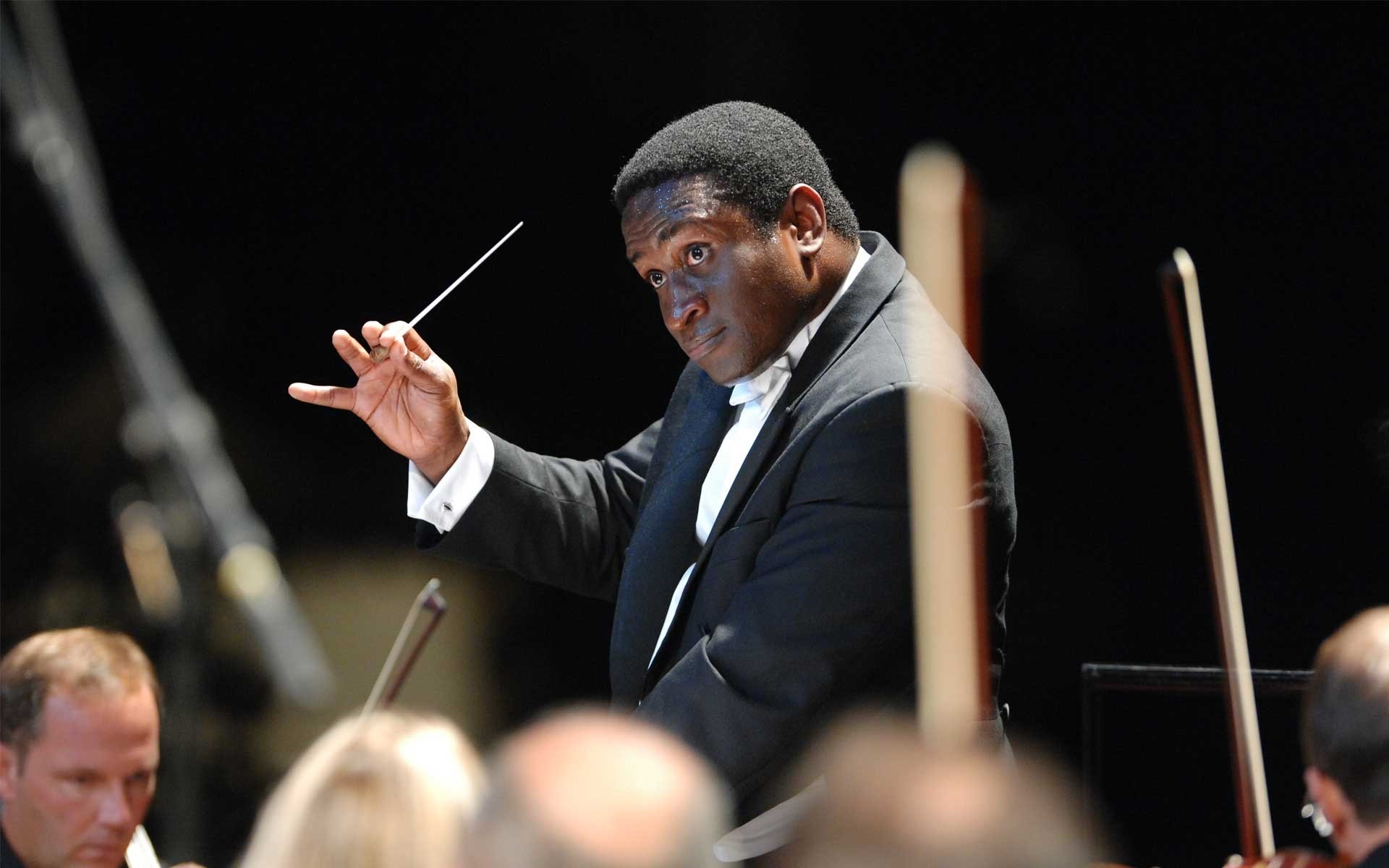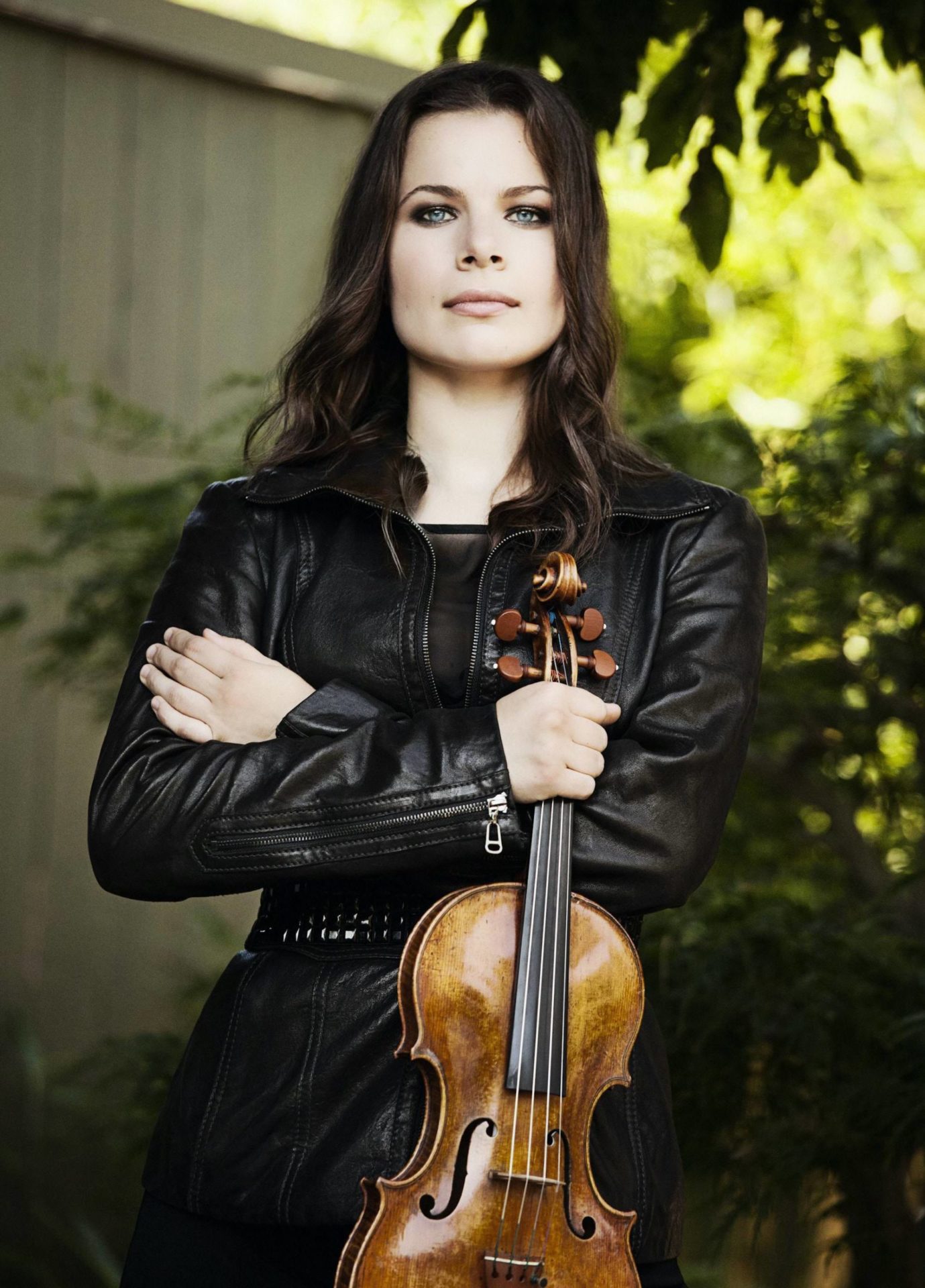Over in North Carolina:
Kwamé Ryan leads the Charlotte Symphony
On Saturday, January 14th the Charlotte Symphony, led by guest conductor Kwamé Ryan, presented a wonderful performance of Aaron Copland’s Symphony No. 3, John Adams’ Short Ride in a Fast Machine, and Erich Wolfgang Korngold’s Concerto for Violin in D Major, Op. 32 with Bella Hristova on the violin. The evening was a marvelous exhibition of virtuosity and old school American patriotism exercised in fanfare.
Ryan started bravely with Adam’s virtuosic (especially for the conductor) Short Ride on a Fast Machine, which the composer once described as “You know how it is when someone asks you to ride in a terrific sports car, and then you wish you hadn’t?” Short Ride is a post-minimalist piece that adheres to minimalist techniques but places them in more dramatic settings, in this case a large and sophisticated orchestra. It begins with a couple of notes and rhythmic cells at a high tempo that are aggregated until they are subsumed in the timbral and texture of the piece. Sections are articulated as parts come in and fall out, changing the music’s “landscape.” Percussion is sine qua non, and Charlotte’s percussion section, led by Brice Burton, were on their game. Ryan maintained a nuanced balance across the sections–it is quite easy for the winds and brass to bury the strings, but Ryan ensured that all pistons were firing equally. It was exciting, optimistic and almost manically utopian. When it ended, I realized I had been holding my breath!
The challenge of Korngold’s Violin Concerto, the second work of the evening, is not technical mastery, although there is a great deal of that. It requires that the mastery be immersed in a fluent lyricism. Primarily a film composer, Korngold’s melodies and romantic style in films like The Adventures of Robin Hood (1938) and Juarez (1939) were ground breaking in their application of the highest expression of German Romantic Opera to the dramatic medium of film. A Hollywood composer and refugee of Nazi Austria, Korngold had given up composing concert music from 1939 until Hitler was defeated. His violin concerto was his first piece after his return and in the next decade he would only write concert music. Oddly enough, in a period where concert music was influencing the music of the screen, for Korngold it was just the opposite—his film music influenced his concert works.

Soloist Bella Hristova approached Korngold’s melodies in a fluent but aggressive way—graceful and swashbuckling at once. From the first melody of the opening movement, a lengthy, yearning, singing tone that ascends to the heavens, already in dialogue with the orchestra, Hristova’s violin leaped, bounded and danced. This was countered by the luscious slow 2nd movement Romanza. Here, Korngold’s genius for delicate instrumentation reigned, with the gentle cushioning and context provided by celeste and harp. Indeed, Andrea Mumm Trammell (Harp, principal) deserves special mention for her performance throughout the evening. The final movement, a kind of staccato gigue, allowed Hristova to let out all of the stops and Maestro Ryan kept just enough control of the band to let her shine. Words fail: It was simply a marvelous performance.
The delight was only increased when she returned to encore with a “Bulgarian Dance Tune” that was nearly as bravura as the concerto itself.
After intermission, Copland’s Third Symphony closed the evening. Rich in Copland’s nostalgic American sound, his Third Symphony was written at the end of the Second World War and inspired by Roosevelt’s four freedoms (of speech, of worship, from want, from fear). It culminates with a version of the Fanfare for the Common Man, that he had written earlier in 1942. Maestro Ryan gave a brief introduction in which he connected this work to contemporary events, specifically those in the Ukraine. I have always been uncomfortable with this political connection to the nostalgia in Copland’s sound. Political movements, especially autocratic movements, tend to emphasize a false nostalgia for the past in their calls for change and a reduction of human rights. It is certainly the case that Putin is employing a nostalgia for the glory days of the Soviet Union in justifying his invasion of Ukraine. Obviously Copland’s intentions had nothing to do with that, but, as they say, the author is dead. In anycase, Maestro Ryan gave a nuanced interpretation of Copland’s work, with its gentle imitative counterpoint, wide open registers and velvet diatonic dissonances. The stirring heroism and dignity of the final fanfare brought the audience to their feet.
In all, the concert was wonderful and the Charlotte Symphony put on a delightful program. I much prefer the sound in our Schermerhorn Symphony Center, the Belk was less alive and designed, it seems, more for opera. On entrance, with a reserved parking garage and a payment (only $10) in the venue system set up, I thought they had found a solution to parking, an issue that plagues us in music city. However, when we left, it took us no less that 50 minutes to get out of the parking garage. The search continues.
The Charlotte Symphony returns to the stage February 3rd and 4th with (former Nashville Associate Conductor) Vinay Parameswaran leading another innovative program of works by Smith, Britten, Still, and Sibelius.



